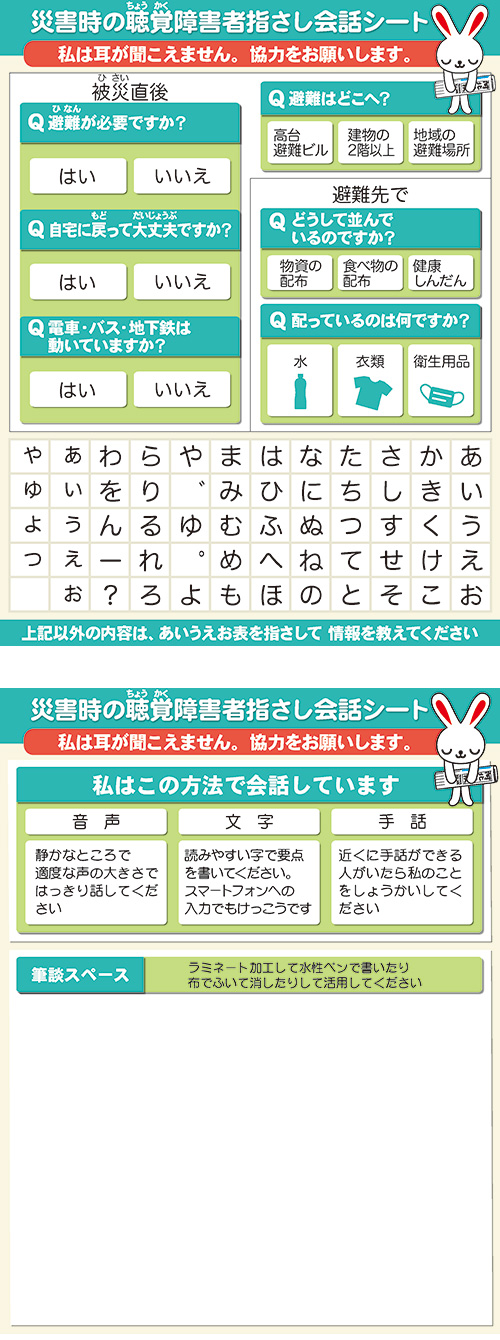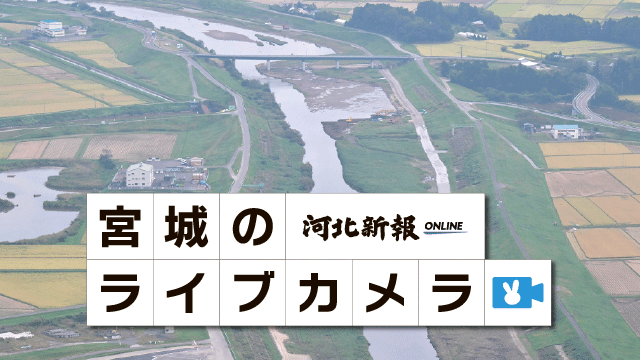Part 9: Preparations in the Workplace (3) Retailers / Serving Customers, Unaware of the Tsunami



After the main shock of the Great East Japan Earthquake subsided, convenience store workers along the coast served customers without realizing the threat of the tsunami.
Chikumi Tanaka (46), part-time staff at the convenience store “Y Shop Marutani” in Otsuchi Town, Iwate Prefecture, felt the large quake and ran out of the store. She waited fearfully, along with a group of female junior high school students.
The shop floor was littered with broken sake bottles. She felt the danger, but returned to cash register duties as shoppers came in. Customers were purchasing items such as bread, rice balls, and flashlight batteries.
The store was dark from a power outage, and the cash register did not work. She wrote down the product names on the back of a flier, and calculated the charge with a calculator. The aftershocks scared her, and at times she ran outside.
She was inside the store when a neighbor yelled from the open entrance, “Chikumi, a tsunami is coming!” “A tsunami? Huh? What?” She looked from store parking lot towards the eastern side of the city. A mass of broken buildings was rushing towards her from around 400 meters away.
She escaped out the back door in alarm and ran up the hill. Immediately afterwards, the debris surged against the store and started a fire.
A major tsunami warning had been issued, but Tanaka could not hear the town’s emergency radio line. She recounts, “I would not have escaped without the neighbor yelling at me. Customers came in, so I just thought I needed to keep working despite the earthquake.”
Muneyuki Yusa (47), a shop owner, was also serving customers until the last minute. His convenience store, the “Lawson” Watari Yamamoto branch in Yamamoto Town, Miyagi Prefecture, stands near the border of Fukushima Prefecture.
“A tsunami is coming!” A customer who had just finished shopping came back with an alarmed expression. Yusa went outside, and strained his eyes towards the direction of the ocean. He saw white-capped waves around 10 meters high, and a cloud of dust billowing up 300 meters east of the store.
“Go to the second floor!” He immediately instructed the four or five customers in the store. A woman fell down, and tried to pick up the merchandise she dropped. “Stop what you’re doing and go up!” He yelled at the female customer in spite of himself. There was no time to lock the cash register or the store.
The tsunami reached the store, standing 1.5 km from the sea, and flooded 50 cm from the floor. “I could not hear the emergency radio line and there was no radio in the store. I had no idea a tsunami was coming,” says Yusa. According to five major convenience store companies, around 60 stores were destroyed or washed away by this tsunami. A total of 32 storeowners, managers, and staff lost their lives. This number includes victims who were not at their stores, and it is unknown whether they were attending to customers at the time.
◎Wider distribution of alarm systems / Customer service remains a concern
How could the lives of customers and store workers be protected? The retail industry is launching various initiatives, based on lessons from the Great East Japan Earthquake.
Pawan, pawan. A shrill warning sound from the emergency alarm rang out in the store. Soon after, the ground shook violently from rolling shocks.
On December 7, 2012, 5:18 p.m., an earthquake with a maximum seismic intensity of 5-Lower hit the Tohoku region. “Not again.” The store manager of the Lawson Kesennuma Higashi Hachimanmae branch in Kesennuma City, Mitsuaki Aratani (39), braced himself. The store flooded a few dozen centimeters from the ensuing tsunami.
“Tsunami warning issued in Miyagi Prefecture. Estimated arrival time of the tsunami is…” The alarm, equipped with a radio, loudly announced the latest disaster information. He soon received a call from company headquarters with orders to evacuate.
“We are closing the store. Please evacuate.” Aratani called out to the five or six customers in the store, together with two other staff.
To customers who came to buy supplies such as food, he explained that they were anticipating a tsunami. He took out money from the cash register, locked the store, and went outside.
Based on lessons from the 2011 earthquake, convenience store companies strengthened their disaster response measures.
Lawson selected around 80 stores in the Tohoku region as tsunami contingency plan branches, and installed earthquake and tsunami alarm systems. On the anniversaries of the Great Hanshin Earthquake and the Great East Japan Earthquake, they held disaster prevention training sessions, reviewing the location of evacuation centers and procedures for closing the store. The company PR staff stresses, “Protecting the safety of our staff will lead to the safety of our customers and community members.”
Another company, Circle K Sunkus, installed warning alarm systems in all of its branches. When warnings are issued for a total of ten scenarios such as heavy rain and floods, the system displays the information on the cash register screen for the staff and customers. In the case of major tsunami and landslide warnings, it automatically sounds an alarm, switches the display, and provides voice instructions, even in the middle of checking out customers. According to the company PR staff, the company hopes that sharing information with the customers would lead to swift action.
The movement has spread beyond convenience stores. Yakuodo (Yahaba Town, Iwate Prefecture), a company with pharmacies in five prefectures of the Tohoku region, lost nine employees from the earthquake. After the earthquake, the company reviewed its disaster action manual, and clearly specified the absolute necessity of evacuation in the event of a tsunami. They also posted evacuation route maps in all of its 163 branches.
While the equipment is prepared, on-site staff faces the challenges of evacuation guidance.
The Kesennuma Higashi Hachimanmae branch of Lawson closed temporarily during the December 7 earthquake last year, but people were still waiting outside at the parking lot. Among them were unfamiliar faces. Store manager Aratani was inside the car in the parking lot.
He voices his dilemma: “I could not leave the customers behind to escape.”
The Ofunato branch of the Iwate Petroleum Industry Association is considering the placement of common signboards at city gasoline stations after they close. The signs will provide information on tsunami warnings or evacuation orders.
Gasoline stations are located along highways and other conspicuous places. Branch manager Jo Niinuma (52) says, “You may not notice the quakes from inside a car. We would like to instantly inform the drivers so that they could evacuate safely.”
Translated by Anna Wada
December 1, 2013 (Sun.)
[Japanese] http://www.kahoku.co.jp/special/spe1114/20131201_01.html
みやぎ地域安全情報
宮城県警 みやぎセキュリティメールより
- 女性に対する不審者事案の発生【山元町】
- 特殊詐欺の予兆電話について(黒川郡大和町)
- 女性に対する盗撮事案の発生【青葉区】
- 女性に対するつきまとい事案の発生【大崎市】
- 特殊詐欺の予兆電話について(気仙沼市)
- オレオレ詐欺の特殊詐欺注意報(仙台市泉区)
- 刃物ようのものを持った男の目撃情報について(大崎市)
- オレオレ詐欺の特殊詐欺注意報(仙台市宮城野区)
- 特殊詐欺の予兆電話について(松島町)
- オレオレ詐欺の特殊詐欺注意報(仙台市太白区)
- オレオレ詐欺の特殊詐欺注意報(石巻市)
- 特殊詐欺の予兆電話について(蔵王町)
- 不審電話について(黒川郡大衡村)
- オレオレ詐欺の特殊詐欺注意報(登米市)
- オレオレ詐欺の特殊詐欺注意報(石巻市)
- 特殊詐欺の予兆電話について(仙台市泉区)
- 特殊詐欺の予兆電話について(加美郡加美町)
- オレオレ詐欺の特殊詐欺注意報(仙台市宮城野区)
- 特殊詐欺の予兆電話について(大崎市)
- オレオレ詐欺の特殊詐欺注意報(亘理郡亘理町)
- 女性に対するつきまとい事案の発生【大和町】
- 特殊詐欺の予兆電話について(仙台市泉区)
 朝刊・夕刊
朝刊・夕刊 記事を探す
記事を探す FAQ
FAQ







